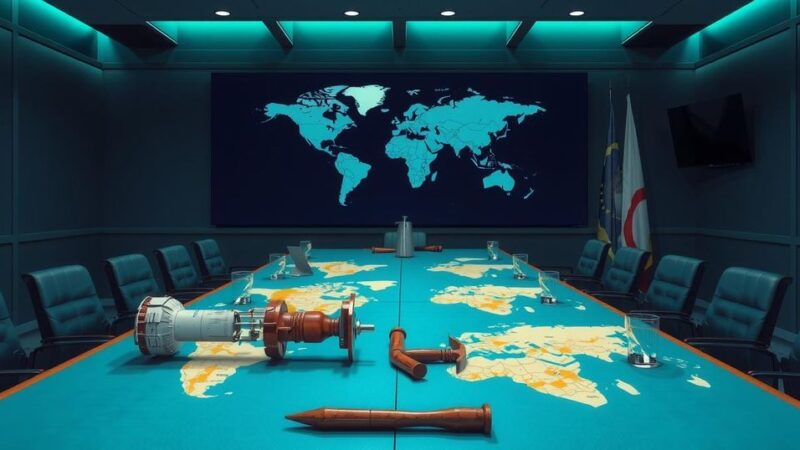Amid sectarian violence and diplomatic progress, Syria under interim President Ahmad al-Sharaa showcases both peril and promise. A landmark agreement was made to unify Kurdish-led forces with the national army, yet significant risks and challenges remain, including the threat of renewed civil war and societal divisions. International support plays a crucial role in these developments but economic sanctions continue to hinder recovery efforts.
In recent events in Syria, interim President Ahmad al-Sharaa’s governance is marked by both peril and promise amid significant violence and diplomatic developments. The country has seen scores of sectarian violence culminating in a recent agreement aimed at unifying armed factions under a national army. While progress appears to have been made, analysts caution that Syria remains at risk of resumed civil war and deeper societal division.
Since Assad’s rule ended, al-Sharaa faces the formidable task of consolidating authority. Though a diplomatic agreement was signed to merge Kurdish-led forces with the national army, challenges persist with many factions still operating independently. Issam al-Reis from Etana emphasizes that there is not yet a cohesive military command, which complicates efforts to stabilize the region.
Recent violence has been exacerbated by the government’s reliance on a mix of undisciplined factions to combat pro-Assad elements. As a result, retaliatory sectarian violence intensified, highlighting the significant obstacles al-Sharaa’s administration faces in gaining legitimacy. Political analyst Ammar Kahf notes that fostering unity requires a comprehensive approach to ensure protection for all communities.
Unexpectedly, the recent violence expedited a significant deal with the Syrian Democratic Forces (SDF) to integrate them into the national army, marking a major diplomatic win for al-Sharaa. Such an agreement reaffirms the central government’s authority over crucial resources and territories, though many logistical details remain unresolved. This coalition has garnered support from both the United States and Turkey, who have vested interests in instilling stability in the region.
However, challenges continue to plague the interim government. Israel’s military interventions in southern Syria further complicate matters, alongside ongoing international sanctions that hinder economic recovery. Addressing the latent fears within the Alawite population and other minorities will require robust measures to ensure security and accountability for violence.
The situation in Syria encapsulates a complex blend of hope amid ongoing threats, necessitating vigilant leadership and cohesive strategies to rebuild trust and a unified national identity among its diverse communities.
In conclusion, Syria’s path forward under interim President Ahmad al-Sharaa presents a mixture of challenges and potential advancements. While recent diplomatic efforts indicate progress towards unity among factions, deep-seated sectarian tensions and the need for a cohesive military strategy remain critical concerns. Furthermore, the new government’s capacity to foster trust and ensure security will be essential for stability in a country still grappling with the scars of civil war.
Original Source: apnews.com






